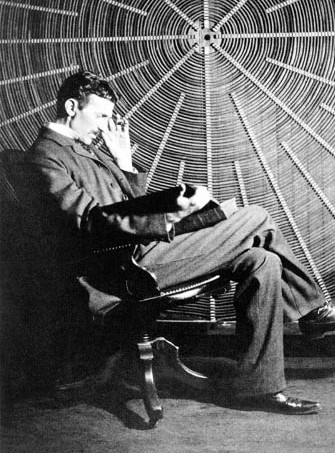-
(b.) -1856 July 10(d.)1943
Bio/Description
Born an ethnic Serb in the village of Smiljan (now part of Gospić), in the Croatian Military Frontier of the Austrian Empire (modern-day Croatia), he was a subject of the Austrian Empire by birth and later became an American citizen. He studied electrical engineering at the Austrian Polytechnic in Graz (1875). While there, he studied the uses of alternating current. Some sources say he received Baccalaureate degrees from the University at Graz. However, the university claims that he did not receive a degree and did not continue beyond the first semester of his third year, during which he stopped attending lectures. He was an inventor, mechanical engineer, and electrical engineer, he was an important contributor to the birth of commercial electricity, and is best known for his many revolutionary developments in the field of electromagnetism in the late 19th and early 20th centuries. His patents and theoretical work formed the basis of modern alternating current (AC) electric power systems, including the polyphase system of electrical distribution and the AC motor. This work helped usher in the Second Industrial Revolution. Because of his 1894 demonstration of wireless communication through radio and as the eventual victor in the "War of Currents", he was widely respected as one of the greatest electrical engineers who worked in America. He pioneered modern electrical engineering and many of his discoveries were of groundbreaking importance. In the United States during this time, his fame rivaled that of any other inventor or scientist in history or popular culture. He demonstrated wireless energy transfer to power electronic devices as early as 1893, and aspired to intercontinental wireless transmission of industrial power in his unfinished Wardenclyffe Tower project. The SI unit measuring magnetic field B (also referred to as the magnetic flux density and magnetic induction), the tesla, was named in his honor (at the CGPM, Paris, 1960). Because of his eccentric personality and his seemingly unbelievable and sometimes bizarre claims about possible scientific and technological developments, he was ultimately ostracized and regarded as a mad scientist by many late in his life. He died with little money at the age of 86 in a hotel suite in New York City. Since the Nobel Prize in Physics was awarded to Marconi for radio in 1909, he and Thomas Edison were mentioned in a press dispatch as potential laureates to share the Nobel Prize of 1915, leading to one of several Nobel Prize controversies. Some sources have claimed that because of their animosity toward each other neither was given the award, despite their scientific contributions; that each sought to minimize the other's achievements and right to win the award; that both refused to ever accept the award if the other received it first; and that both rejected any possibility of sharing it. In the years after these rumors, neither he nor Edison won the Prize (although he received one bid out of 38 in 1937, and Edison received one of 38 possible bids in 1915). Earlier, he alone was rumored to have been nominated for the Nobel Prize of 1912. The rumored nomination was primarily for his experiments with tuned circuits using high-voltage high-frequency resonant transformers.
-
Date of Birth:
1856 July 10 -
Date of Death:
1943 -
Gender:
Male -
Noted For:
Major contributor to the birth of commercial electricity and revolutionary developer in the field of electromagnetism -
Category of Achievement:
-
More Info:


